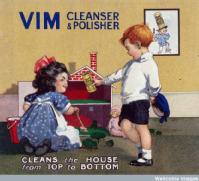Seminar 10: Domestic Practices of Healing
 |
Household medicine has traditionally been associated with the early modern period, particularly householders’ use of recipe books. However, there is strong evidence to suggest that a variety of medical practices and health-promoting activities continued to be adopted in modern households. It could even be argued that the range of practices increased after 1800, prompted by the accessibility of cheap print (and hence increased availability of domestic health manuals), the robust state of commercial medicine (including patent medicines and medical advertising), and the new systems of medicine that flourished in the nineteenth century (prompted by a self-help culture and desire to spread medical knowledge beyond licensed doctors). This seminar explores the rich variety of practices and techniques of knowledge transmission drawn on to treat household members and to improve their health, and also considers how such practices have continued to flourish until the modern day. We will also explore some primary source materials in this seminar. |
1. Why and how did householders opt to treat themselves and each other?
2. How was medical know-how transmitted to households after 1800?
3. How influential were new systems of medicine in shaping household practices?
4. How did new ways of selling medicine impinge on the household?
Seminar Reading:
Read at least two of the following articles:
Lucinda McCray Beier, ‘"I used to take her to the doctor and get the proper thing": Twentieth-Century Health Care Choices in Lancashire Working-Class Communities’, in Michael Shirley and Todd Larson (eds), Splendidly Victorian (Aldershot: Ashgate, 2001), 221-41. scanned article in course extracts
Hilary Marland and Roberta Bivins, 'Weighting for Health: Management, Measurement and Self-Surviellence in the Modern Household', Social History of Medicine, 29 (2016), 757-80. e-journal
Hilary Marland, ‘The Medical Activities of Mid-Nineteenth-Century Chemists and Druggists, with Special Reference to Wakefield and Huddersfield’, Medical History, 31 (1987), 415-39. e-journal
Hilary Marland and Jane Adams ‘“Hydropathy at Home: The Water Cure and Domestic Healing in Mid-Nineteenth-Century England’, Bulletin of the History of Medicine, 83 (2009), 499-529. e-journal
Kathryn Gleadle, ‘“The Age of Physiological Reformers”: Rethinking Gender and Domesticity in the Age of Reform’, in Arthur Burns and Joanna Innes (eds), Rethinking the Age of Reform: Britain 1780-1850 (Cambridge: Cambridge University Press, 2003), 200-19. scanned article in course extracts
Primary Sources
The Modern Family Doctor (London, 1914) historical texts
Extract from the the Chemist and Druggist
Product Labels from Stanley & co. Chemists, Leamington Spa 1860-1880
Inside of a late 19th century chemist
Spend a few minutes trying to locate some additions soruces or advertisements for family remedies. The Wellcome Library also has a wonderful collection of family recipe books/receipt books, many from the nineteenth century: https://wellcomelibrary.org/collections/browse/topics/Receipt%20books/
Additional Reading:
Lucinda McCray Beier, For Their Own Good: The Transformation of English Working-Class Health Culture, 1880–1970 (Columbus, Ohio: Ohio State University Press, 2008).
Patricia Branca, Silent Sisterhood: Middle-Class Women in the Victorian Home (London: Croom Helm, 1975), esp. ch. 4.
Michael Brown, ‘Medicine, Quackery and the Free Market: The “War” against Morison’s Pills and the Construction of the Medical Profession, c.1830-1850’, in Mark S.R. Jenner and Patrick Wallis (eds), Medicine and the Market in England and Its Colonies, c.1450-c.1850 (Houndmills: Palgrave-Macmillan, 2007), 238-61. e-book
Kathryn Gleadle, ‘“The Age of Physiological Reformers”: Rethinking Gender and Domesticity in the Age of Reform’, in Arthur Burns and Joanna Innes (eds), Rethinking the Age of Reform: Britain 1780-1850 (Cambridge: Cambridge University Press, 2003), 200-19. scanned article in course extracts
Mark Jackson (ed.), Health and the Modern Home (London and New York: Routledge, 2007).
C.J. Lawrence, ‘William Buchan: Medicine Laid Open’, Medical History, 19 (1975), 20-35. e-resource Pub Med
Lori Anne Loeb, Consuming Angels: Advertising and Victorian Women (New York and Oxford: Oxford University Press, 1994).
Lori Loeb, ‘Doctors and Patent Medicine in Modern Britain: Professionalism and Consumerism’, Albion: A Quarterly Journal Concerned with British Studies, 33 (2001), 404-25. e-resource JSTOR
Hilary Marland, ‘“The Diffusion of Useful Information”: Household Practice, Domestic Medical Guides and Medical Pluralism in Nineteenth-Century Britain’, in Robert Jütte (ed.), Medical Pluralism: Past – Present – Future, special issue of Medizin, Gesellschaft und Geschichte (2013), 81-100.
Hilary Marland, ‘“The Doctor’s Shop”: The Rise of the Chemist and Druggist in Nineteenth-Century Manufacturing Districts’, in Louise Hill Curth (ed.), From Physick to Pharmacology: Five Hundred Years of Drug Retailing (Aldershot: Ashgate, 2006), 79-104.
Hilary Marland, Health and Girlhood in Britain, 1874-1920 (Houndmills: Palgrave-Macmillan, 2013), esp. ch. 2.
Ursala Miley and J.V. Pickstone, ‘Medical Botany around 1850: American Medicine in Industrial Britain’, in Roger Cooter (ed.), Studies in the History of Alternative Medicine (Houndmills: Palgrave, 1988), 140-54.
Graham Mooney, Public Health, Domestic Space, and Infectious Disease Surveillance in England, 1840-1914 (Boydell and Brewer, 2015).
Thomas Richards, The Commodity Culture of Victorian England: Advertising and Spectacle 1851-1914 (Stanford, CA: Stanford University Press, 1990).
Sally Shuttleworth, ‘Female Circulation: Medical Discourse and Popular Advertising in the Mid-Victorian Era’, in Mary Jacobus, Evelyn Fox Keller and Sally Shuttleworth (eds), Body/Politics: Women and the Discourses of Science (London: Routledge, 1990), 47-68.
Takahiro Ueyama, Health in the Marketplace: Professionalisation, Therapeutic Desires, and Medical Commodification in Late-Victorian London (Palo Alto, CA: Society for the Promotion of Science and Scholarship, 2010), esp. ch. 2.
Takahio Ueyama, ‘America’s Shadow: Americanization of Food and Therapeutic Diets in Victorian London’, The Japanese Journal of American Studies, 21 (2010), 139-69.
Essay Questions
Why and how did householders opt to treat themselves and each other?
How did people endeavour to maintain their family's health in the nineteenth and twentieth centuries?
Did the advent of the NHS lead to a decline in domestic medicine?
Discuss the role of the advertising industry in the commercialisation of medicine.
